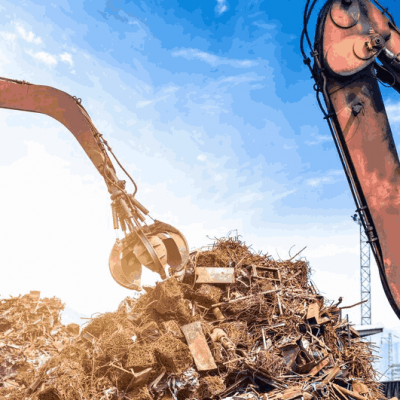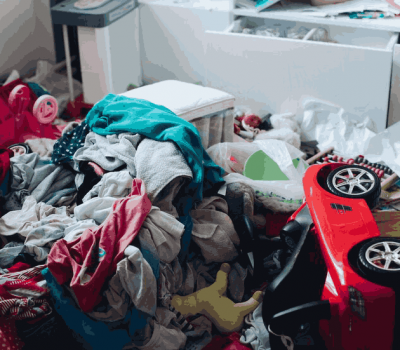The Art of Letting Go: Junk Removal as a Lifestyle Choice
In a world where possessions often define us, the concept of letting go can be daunting yet liberating. “The Art of Letting Go: Junk Removal as a Lifestyle Choice” delves into the transformative power of decluttering, exploring how shedding physical baggage can lead to emotional freedom. This blog explores the journey from accumulation to liberation, emphasizing the psychological benefits of simplifying one’s surroundings. From Marie Kondo sparking joy to minimalist movements, society increasingly recognizes the value of living with less. But beyond trendy tidying methods lies a profound shift in mindset—an acknowledgment that our attachment to material possessions can hinder personal growth. Through anecdotes, expert insights, and practical tips, this blog champions the art of releasing what no longer serves us, inviting readers to embrace a lighter, more intentional way of living. Join us on this journey of discovery as we explore the profound impact of junk removal as a lifestyle choice.
Navigating the Challenges of Junk Removal
Downsizing can be a daunting task, whether you’re moving to a smaller home, transitioning to a minimalist lifestyle, or simply seeking to declutter your space. One of the most significant challenges in the downsizing process is effectively managing junk removal. However, with careful planning and the right approach, you can navigate this challenge with ease. In this article, we’ll explore practical strategies for downsizing done right, focusing specifically on the art of junk removal.

- Prioritize Items: Once you’ve taken inventory of your belongings, it’s time to prioritize. Identify items that hold sentimental value, serve a practical purpose, or bring you joy. These are the possessions worth keeping as you downsize. However, be honest with yourself about what you truly need and avoid holding onto items out of guilt or obligation.
- Tackle One Area at a Time: Breaking the downsizing process into manageable chunks can make it feel less overwhelming. Start with one area of your home—a closet, a room, or even a single drawer—and work through it methodically. Sort items into categories: keep, donate, sell, or discard. As you go through each category, be ruthless in your decision-making. If you haven’t used or enjoyed an item in the past year, it’s likely time to let it go.
- Dispose Responsibly: When disposing of unwanted items, it’s crucial to do so responsibly. Consider donating gently used items to local charities or nonprofit organizations. Many communities also offer recycling programs for items like electronics, clothing, and household goods. For items that aren’t suitable for donation or recycling, explore options for proper disposal, such as bulk trash pickup or hazardous waste collection.
- Sell Strategically: If you have valuable items that you no longer need, selling them can be a lucrative way to declutter while recouping some of your investment. Host a yard sale, list items for sale online, or consign them to a local thrift store or consignment shop. Keep in mind that selling items can be time-consuming, so prioritize items with significant resale value.
- Embrace the Process: Downsizing and junk removal can be emotionally challenging, especially if you’re parting with items that hold sentimental value. Allow yourself to acknowledge and process these emotions as you go through the decluttering process. Remind yourself of the benefits of downsizing, such as reduced stress, increased space, and greater freedom.
The Emotional Journey of Letting Go: Understanding Attachment to Possessions
Letting go of possessions can be an emotionally charged process. Whether it’s parting with sentimental items or simply clearing clutter, our belongings often hold deep personal significance. In this article, we’ll explore the psychological aspects of attachment to possessions and delve into the emotional journey of letting go.

Sentimental Attachment
One of the most common forms of attachment to possessions is sentimental attachment. These items hold emotional value, often tied to memories, relationships, or significant life events. Whether it’s a childhood toy, a gift from a loved one, or a memento from travels, sentimental possessions evoke strong emotions and can be difficult to part with.
Instrumental Attachment
Instrumental attachment refers to the practical utility or function that possessions serve in our lives. These items may not hold significant emotional value but are valued for their usefulness. Examples include household appliances, tools, or technology gadgets. Letting go of these possessions can be challenging if we fear losing their practical benefits.
Self-Extension Attachment
Self-extension attachment involves the symbolic representation of our identity through possessions. We often use belongings to express aspects of our personality, interests, or social status. Clothes, accessories, and personal belongings are examples of possessions that reflect our self-image. Parting with these items may feel like losing a part of ourselves.
The Emotional Journey of Letting Go
The process of letting go of possessions involves a complex emotional journey. Initially, there may be resistance or reluctance to part with items due to the fear of loss or change. This resistance can manifest as anxiety, sadness, or even guilt. However, as we progress through the decluttering process, we may experience a range of emotions, including relief, liberation, and empowerment.
Overcoming Attachment
To overcome attachment to possessions, it’s essential to adopt a mindful and intentional approach. Start by reflecting on the reasons behind your attachment and acknowledging the emotions associated with letting go. Practice gratitude for the memories or experiences associated with sentimental items, recognizing that memories reside within us rather than the objects themselves.
How Junk Removal Can Transform Your Living Space
In our modern world, clutter seems to accumulate effortlessly. From old clothes to unused appliances, it’s easy for our living spaces to become overrun with belongings we no longer need or use. However, the act of junk removal goes beyond simply tidying up—it has the power to completely transform your living space and, in turn, your quality of life.
- Understanding the Impact of Clutter: To truly grasp the significance of junk removal, it’s essential to understand the negative impact that clutter can have on our lives. Clutter not only creates physical chaos but also contributes to mental and emotional stress. Studies have shown that excess clutter can lead to increased levels of cortisol, the stress hormone, and feelings of overwhelm. By acknowledging the toll that clutter takes on our well-being, we can begin to appreciate the importance of decluttering through junk removal.
- Creating Space for What Matters: One of the most significant benefits of junk removal is the creation of physical space within your home. When we remove unnecessary items, we make room for the things that truly matter to us. Whether it’s creating a designated workspace, a cozy reading nook, or simply allowing for more open floor space, decluttering through junk removal enables us to design our living environments according to our preferences and priorities.
- Enhancing Visual Aesthetics: A cluttered space can feel chaotic and overwhelming, detracting from its visual appeal. However, by removing excess junk, we can transform our living spaces into environments that are visually pleasing and harmonious. Imagine walking into a room that is free of clutter, with clean lines and unobstructed surfaces. Not only does this contribute to a more aesthetically pleasing atmosphere, but it also promotes a sense of calm and serenity.
- Promoting Functional Living: Clutter often inhibits our ability to use our living spaces effectively. Whether it’s struggling to find items amidst the chaos or navigating around piles of belongings, excess clutter can hinder our daily routines and activities. Through junk removal, we can optimize the functionality of our living spaces, making it easier to move freely and access the things we need. This, in turn, promotes a sense of efficiency and ease in our daily lives.
- Fostering Emotional Well-Being: Our living environments have a profound impact on our emotional well-being. A cluttered and disorganized space can evoke feelings of stress, anxiety, and even shame. Conversely, a clean and clutter-free environment can promote feelings of calm, contentment, and pride in our surroundings. By engaging in junk removal and creating a space that is conducive to positive emotions, we can enhance our overall sense of well-being and happiness.
Conclusion
JUNKAHAULICS in Raleigh, North Carolina, epitomizes the transformative power of letting go, showcasing junk removal not merely as a service but as a lifestyle choice. At JUNKAHAULICS, we recognize that clearing physical clutter fosters mental clarity and emotional well-being. Our dedication to providing efficient and reliable junk removal services reflects our commitment to enabling individuals to reclaim their spaces and lead more fulfilling lives. With our expertise and personalized approach, we empower our clients to embrace the art of letting go, ultimately contributing to a healthier, happier community in Raleigh and beyond.




